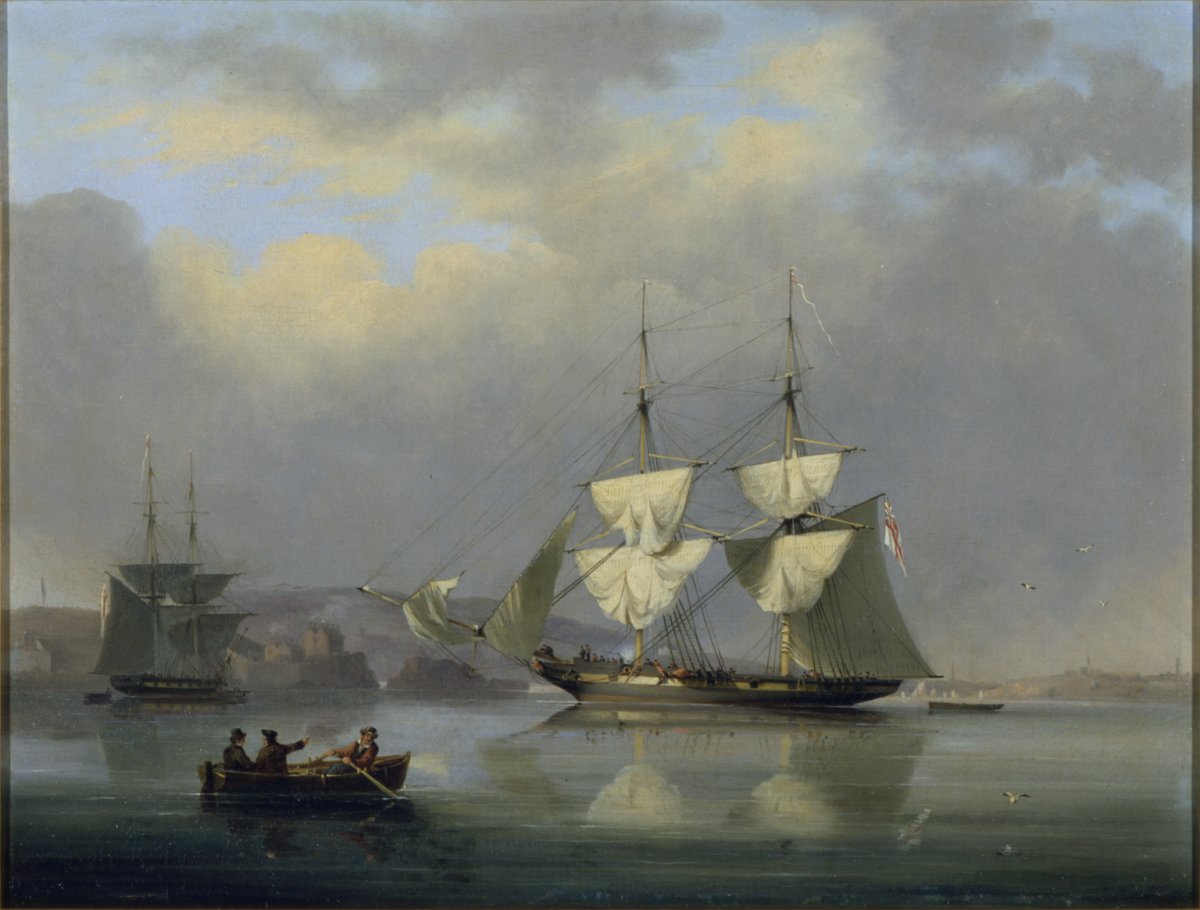HMS Pantaloon

-
About the work
- Location
-
Country: Other
City: other locations abroad
This marine view shows a small boat being rowed towards HMS Pantaloon, through calm waters. HMS Pantaloon was built for the Duke of Portland and purchased for the Royal Navy. Having sailed to the West Coast of Africa, North America and the West Indies, she returned to Portsmouth in 1852 and was broken up later that year.
The imperial visit by Peter the Great (1672–1725) to England in 1698 had a lasting impact on several aspects of Russian society, including naval and academic circles. Peter the Great was impressed by the technical knowledge and training offered in England, which may have influenced his encouragement of the foundation of Russian institutions, such as the Moscow School of Mathematics and Navigation in 1701. Moscow was also the site of Russia’s first observatory.
Developments in Russian navigational techniques led to improvements in map-making and scientific instruments. English scientists, craftsmen and naval commanders were invited or employed to transfer their knowledge and skills to their Russian counterparts via apprentice programmes. One example is the naval officer John Deane (c.1685–1761), who took a commission in the Russian Navy, remaining for 11 years and earning a reputation as a successful and daring combat commander. The power of the Russian Navy inspired Under-Secretary of State George Tilson to remark in 1721:
'...before we are aware we may hear of a Russian squadron in the British Ocean [the North Sea] ready to take the side of our enemies'.
-
Explore
- Places
- Subjects
- rowing boat, HMS 'Pantaloon', seascape/coastal scene, British School C19th, ensign (ship), ship
- Materials & Techniques
- canvas, oil, oil painting
-
Details
- Artist
-
Nicholas Condy (1793 - 1857)
- Title
- HMS Pantaloon
- Date
- c.1832
- Medium
- Oil on canvas
- Dimensions
- height: 48.00 cm, width: 63.50 cm
- Acquisition
- Purchased from Agnew's, April 1950
- Inscription
- none visible
- Provenance
- With Agnew’s Gallery, London; from whom purchased in April 1950
- GAC number
- 1119